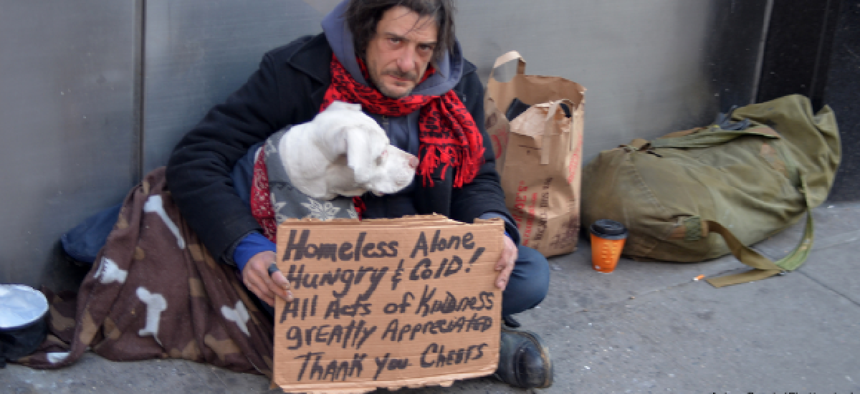City mines eviction filings to slow homelessness


Connecting state and local government leaders
New York City's Department of Homeless Services is using analytics to anticipate evictions and help identify families at risk of becoming homeless.
According to the National Coalition for the Homeless, the number of New York City residents in homeless shelters has increased by more than 72 percent since 2002. In an effort to slow the trend, the city is using data mining tools to help prevent the evictions that can send families into shelters in the first place.
SumAll Foundation, a nonprofit that provides civic analytics to the social sector, is working with the city’s Department of Homeless Services (DHS), to anticipate evictions and help identify families at risk of becoming homeless in the near future, according to an article in Fast Company.
"[Eviction] is a major cause of homelessness for families who come into shelters," Sara Zuiderveen, assistant commissioner of prevention services at DHS, was quoted as saying on the SumAll website. "The challenge really comes in the targeting piece, making sure services are reaching the people who are most at risk."
The software model, which is still being tested, offers a visual representation of addresses and buildings where evictions are occurring and likely to result in homelessness, said SumAll Foundation CEO Stefan Heeke. Armed with that information, social workers can prioritize those at risk, visiting residences and leaving information on services, including legal and housing programs, which could prevent a family from entering a shelter.
Analyzing data to prevent families from ending up in shelters is only one way the city is using data analytics. The city formally created the Mayor’s Office of Data Analytics (MODA) at the beginning of 2013, which is running several programs of its own.
MODA aggregates and analyzes data from across city agencies, “to more effectively address crime, public safety and quality of life issues,” said the agency. “The office uses analytics tools to prioritize risk more strategically, deliver services more efficiently, enforce laws more effectively and increase transparency.”
In its annual report, MODA listed several initiatives it was involved in, including:
- Incorporating information from the New York Police Department’s 911 system and the Fire Department’s dispatch and EMS call systems to calculate response times.
- Piloting a new risk algorithm to identify unsafe apartments.
- Launching the city’s first Fire Risk Based Inspection System.
- Using the integration and analysis of data to identify the impact of Hurricane Sandy, where further actions needed to be taken, and how best to prepare for and respond to future catastrophes.
MODA also helped the city’s Department of Environmental Protection crack down on restaurants that were illegally dumping cooking oil into sewers in their neighborhoods and helped the NYC Department of Buildings create a file of all structures in the city to help identify building complaints that represent the greatest catastrophic risk.
Additionally, NYC is also analyzing existing video feeds to glean data about pedestrian traffic patterns. The information has a variety of uses from helping small businesses scout new locations to enabling the sanitation department to anticipate demand for trash pickups.
NEXT STORY: Walter Reed launches mass communication system




